Best Haskell Learning Tools to Buy in November 2025
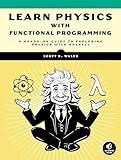
Learn Physics with Functional Programming: A Hands-on Guide to Exploring Physics with Haskell


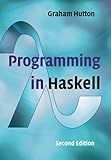
Programming in Haskell


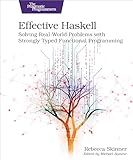
Effective Haskell: Solving Real-World Problems with Strongly Typed Functional Programming


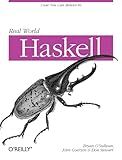
Real World Haskell
- AFFORDABLE PRICING WITHOUT SACRIFICING QUALITY.
- RELIABLE SOURCE FOR QUALITY PRE-OWNED BOOKS.
- ECO-FRIENDLY CHOICE: SUPPORT RECYCLING AND REDUCE WASTE.


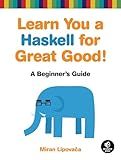
Learn You a Haskell for Great Good!: A Beginner's Guide
- QUALITY ASSURANCE: CAREFULLY VETTED FOR GOOD CONDITION AND READABILITY.
- BUDGET-FRIENDLY: SAVE MONEY WITH AFFORDABLE PRE-OWNED BOOK OPTIONS.
- ECO-FRIENDLY CHOICE: PROMOTE SUSTAINABILITY BY BUYING USED BOOKS!



Soar with Haskell: The ultimate beginners' guide to mastering functional programming from the ground up


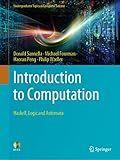
Introduction to Computation: Haskell, Logic and Automata (Undergraduate Topics in Computer Science)


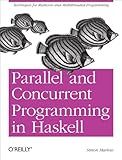
Parallel and Concurrent Programming in Haskell: Techniques for Multicore and Multithreaded Programming


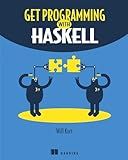
Get Programming with Haskell


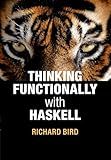
Thinking Functionally with Haskell


In Haskell, lists are a fundamental data structure used to store sequences of elements of the same type. The elements of a list are enclosed within square brackets and separated by commas. Lists are immutable, meaning once created, their elements cannot be modified. There are various functions and operators available in Haskell to work with lists:
- Creating Lists: An empty list: []. A list with elements: [1, 2, 3]. Using a range: [1..10] creates a list from 1 to 10.
- Concatenating Lists: Using the ++ operator: [1, 2, 3] ++ [4, 5, 6] results in [1, 2, 3, 4, 5, 6].
- Accessing Elements: Using indexing: [1, 2, 3] !! 0 refers to the element at index 0, which is 1.
- List Operations: Adding an element to the beginning (cons operator): 1:[2, 3, 4] results in [1, 2, 3, 4]. Getting the length of a list: length [1, 2, 3] returns 3. Reversing a list: reverse [1, 2, 3] gives [3, 2, 1]. Checking if a list is empty: null [1, 2, 3] returns False.
- List Comprehensions: List comprehensions provide a concise way to create or transform lists using generators and optional filters. For example: [x | x <- [1..10], even x] generates a list of even numbers from 1 to 10, resulting in [2, 4, 6, 8, 10].
- Pattern Matching on Lists: Using pattern matching, you can destructure and manipulate lists easily. For example: sumList :: [Int] -> Int sumList [] = 0 sumList (x:xs) = x + sumList xs The function sumList recursively sums the elements of a list by pattern matching on its structure.
These are just some of the operations that can be performed on lists in Haskell. Working with lists is an essential skill for any Haskell programmer, and it allows for powerful list processing and functional programming techniques.
How to check if an element is present in a list in Haskell?
In Haskell, you can check if an element is present in a list using the elem function. The elem function takes two arguments: the element you want to check for and the list to search in.
Here is an example:
isElementPresent :: (Eq a) => a -> [a] -> Bool isElementPresent x xs = elem x xs
In this example, x is the element you want to check for, and xs is the list you want to search in. The function isElementPresent simply calls the elem function with these arguments.
You can use this function as follows:
main = do let myList = [1, 2, 3, 4, 5] print (isElementPresent 3 myList) -- Output: True print (isElementPresent 6 myList) -- Output: False
In this example, we have a list called myList. We call the isElementPresent function with 3 and myList as arguments to check if 3 is present in myList. The result will be True. We also check if 6 is present in myList, and the result will be False.
What is the maximum function used for with lists in Haskell?
The maximum function in Haskell is used to find the largest element in a list. It takes a list of ordered items as input and returns the maximum element.
Here's the type signature of the maximum function:
maximum :: (Ord a) => [a] -> a
It takes a list of elements [a] and returns a single element a. The Ord a constraint ensures that the elements of the list can be compared in terms of ordering.
For example, if we have a list [4, 7, 2, 9, 1], the maximum function will return 9, as it is the largest element in the list.
How to find the minimum value in a list in Haskell?
In Haskell, you can use the minimum function to find the minimum value in a list. Here's an example:
minValue :: (Ord a) => [a] -> a minValue = minimum
You can call this function by passing a list of values and it will return the minimum value. For example:
main :: IO () main = do let list = [5, 3, 8, 1, 6] putStrLn $ "Minimum value: " ++ show (minValue list)
-- Output: Minimum value: 1
Note that the Ord type constraint is required because the minimum function requires the values in the list to be orderable.
What is the tail function used for with lists in Haskell?
The tail function in Haskell is used to extract all but the first element from a list. It takes a list as input and returns a new list containing all the elements from the second element onwards.
The type signature of the tail function is as follows:
tail :: [a] -> [a]
For example, consider the following list:
list = [1, 2, 3, 4, 5]
Using the tail function on this list would yield:
tail list -- Output: [2, 3, 4, 5]
Note that if the input list is empty or contains only one element, the tail function will return an empty list. For example:
tail [1] -- Output: []
tail [] -- Output: []
How to drop elements from a list in Haskell?
In Haskell, we can drop elements from a list using the drop function. The drop function takes two arguments: the number of elements to drop and the list from which to drop the elements. Here's an example:
dropElements :: Int -> [a] -> [a] dropElements n xs = drop n xs
In this example, n represents the number of elements to drop and xs is the list. The drop function will return a new list with the specified number of elements dropped from the front. If n is greater than the length of the list, an empty list will be returned.
Here's how you can use the dropElements function:
main :: IO () main = do let myList = [1, 2, 3, 4, 5] let droppedList = dropElements 2 myList putStrLn $ show droppedList -- Output: [3, 4, 5]
In this example, we drop 2 elements from the list [1, 2, 3, 4, 5], resulting in the list [3, 4, 5].
What is the replicate function used for with lists in Haskell?
The replicate function in Haskell is used to create a new list by replicating a given element a specified number of times.
Its type signature is:
replicate :: Int -> a -> [a]
The Int argument specifies the number of times the element should be replicated, and the a argument represents the element itself. The function returns a list of a elements, where each element is a copy of the given element.
For example:
replicate 3 'a'
This will return the list ['a', 'a', 'a'].
